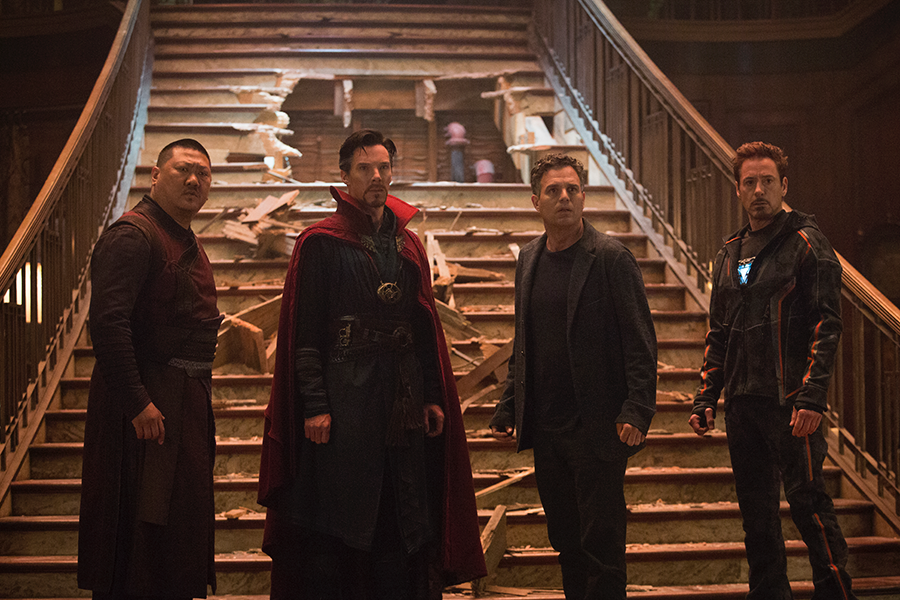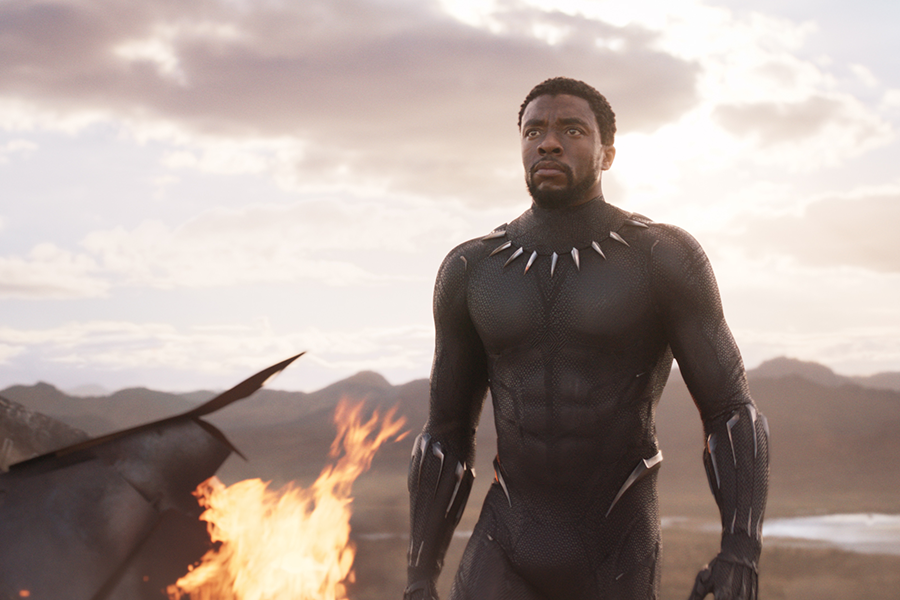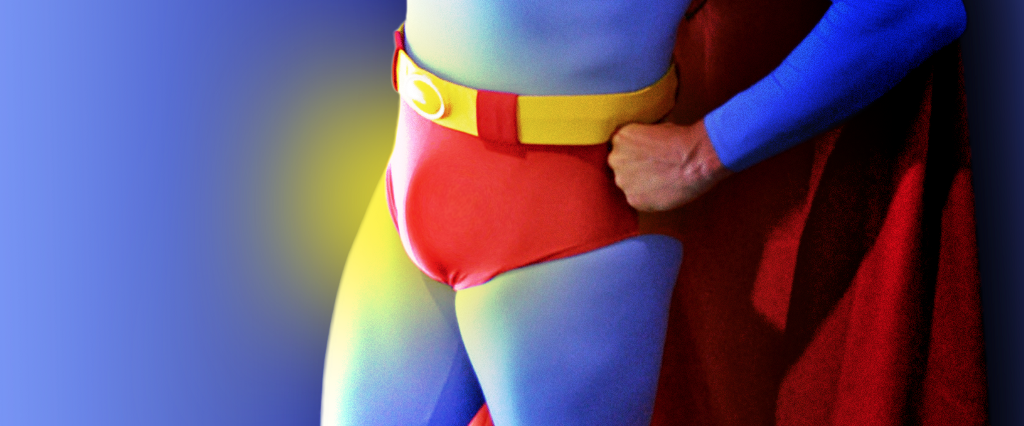There’s a YouTube video from 2014 simply titled “Batman Suit-up Compilation.” As that description suggests, the 106-second clip, which has received approximately 1.86 million views, is a highlight reel of different times in Batman movies in which the Caped Crusader dons his Batsuit.
It’s a fairly innocuous video, but it’s generated more than 550 comments. And the first responder basically sums up the discussion that continues down the rest of the page: “Was there any point of showing Batman’s ass? Furthermore, why were Bats and Robin wearing codpieces? ”
The Batbutts displayed in Joel Schumacher’s Batman Forever and Batman & Robin have long been a sticking point for straight, male comic-book lovers, but that shouldn’t distract from the fact that a different part of the superhero anatomy has long vexed and fascinated fanboys. For as much time as many young men devote to thinking about Superman or Batman, it’s funny how little they want to think about his junk — which, of course, only makes them think about it more. If superheroes teach straight boys about self-sacrifice and bravery, they also instill in them a giggling discomfort with male sexuality and a weird sense of envy. Basically, we can’t stop staring at that codpiece.
Neither can the people who design superhero costumes. “When you’re designing superhero suits, it all comes down to the crotch,” Michael Wilkinson said in 2014. And he should know: He’s long been director Zack Snyder’s go-to costume designer, working on 300, Watchmen, Man of Steel, Batman v Superman and Justice League. In the same interview, he noted, “You have to present things in an appealing way but something that’s not too confronting and has the right tone for the film. It’s something where you have to use all of your costuming skills to find that balance. I think having done 300 I’m pretty much an expert on codpieces. I remember on that film we had five different shapes and we gave them all names. For example, we had ‘the spider.’ We had ‘the donkey.’ We had all different shapes for different fellows.”
From the beginning, virility has been central to our conception of what makes a comic-book character super — even if our collective consensus on what constitutes masculinity has changed over time. In the 1930s, back when Superman was a figment of the imagination of writer Jerry Siegel and illustrator Joe Shuster, they conceived their Kryptonian as a guy who wore red trunks over his costume. They had swiped the idea from the circus — specifically, the strongmen, who were the most macho of the attractions.
As comic-book writer Grant Morrison explains in his 2011 book Supergods: What Masked Vigilantes, Miraculous Mutants and a Sun God from Smallville Can Teach Us About Being Human, “Underpants on tights were signifiers of extra-masculine strength and endurance. … Lifting bridges, stopping trains with his bare hands, wrestling elephants: There were superstrongman feats that benefited from the carnival flair implied by skintight spandex. Shuster had dressed the first superhero as his culture’s most prominent exemplar of the strongman ideal, unwittingly setting him up as the butt of ten thousand jokes.”
Superman’s super-underpants are still widely mocked, but I suspect one of the reasons they are is because they force the viewer to confront what’s nestling inside them. Men’s combination of revulsion and curiosity about looking at another man’s junk is brought to the fore by Superman, and the comic books (and subsequent films) have all wrestled with how much genitalia is too much for fans to, uh, handle.
In 2016, Inverse published a pretty extensive rundown of Superman’s ongoing battle with the bulge, pointing out (via the 2009 book Secret Identity: The Fetish Art of Superman’s Co-Creator Joe Shuster) that Shuster was rather timid at first at highlighting Superman’s crotch, although he moonlighted as an illustrator of fetish cartoons in the 1950s, where big bulges were far less problematic for him. Eventually, though, the Man of Steel got a super-unit thanks to Richard Donner’s 1978 film Superman, starring Christopher Reeve.
The movie’s costumes were designed by Oscar-winner Yvonne Blake, who previously worked on Fahrenheit 451, Jesus Christ Superstar and The Three Musketeers. Blake’s original Superman sketches can be viewed online — these were made before Reeve was cast — but it’s clear even at that early stage that this superhero was going to be packing. Blake died last month at the age of 78, once saying of her Superman design, “It was a question of reproducing what looked like a pretty silly costume into one that could be worn by an actor that would look attractive and believable to Superman fans. It was important that the tights and shorts did not look like ballet dancers’, so the problem of lumps and bumps was solved by wearing a plastic protection shield normally used by boxers.”
It’s notable that Blake’s chief worry wasn’t making Superman look too graceful or “girly” — like a ballet dancer, the culture’s narrow-minded vision of unmanly. So Reeve got a smooth codpiece — unlike the much more blatant bulge that ballet dancers sport — which became a signifier of masculinity that moviegoers have since come to expect.
Still, we as a society can’t help but find the very idea of needing an artificial apparatus that suggests a huge dick funny. That goes for the other actors, too. Margot Kidder, who played Lois Lane to Reeve’s Superman, once said, “They put poor Christopher in this various assortment of sizes of codpiece under the suit in the red underpants, and some days Christopher would come out and he’d be out to here. Which would make me go ‘ding ding ding ding’” — she simulated the act of flicking her co-star’s codpiece — “‘cause they were all made of metal. He’d go, ‘Kidder! Stop it!’”
Superman, however, is hardly the only superhero obsessed with how his junk looks in his work clothes. Before Tim Burton made 1989’s Batman, the popular impression of the Dark Knight was probably still that of Adam West camping it up in the 1960s TV show. Burton ended that impression — starting with the character’s costume. “The idea was to humanize Batman,” the director said at the time. “He dresses like this for theatrical effect. We had to find a psychological basis for his dress code. You can’t just do, ‘Well, I’m avenging the death of my parents — Oh!, a bat’s flown through the window. Yes, that’s it. I’ll become a Batman!’ That’s all stupid comic book stuff and we don’t explore it at all. … He switches identities to become something else entirely, so why wouldn’t he overdo it?”
Burton recruited Oscar-nominated costume designer Bob Ringwood, who had been involved with everything from sci-fi epics (Dune) to coming-of-age period dramas (Empire of the Sun). Ringwood wasn’t familiar with Batman before Burton’s call, so he bought around 200 comics, across different eras, to get a sense of the character. “[I] started thinking about why a man would dress up as a bat — the whole idea is absurd — and I decided that to make it work, I had to come up with a bat that was dark and mysterious and sexy,” Ringwood later said.
His initial drawings suggested a muscular, virile Batman, moving away from the blue-and-gray look popular in earlier incarnations of the character. “I had decided from the beginning that this ‘Batman’ was not going to be in blue knickers,” said Ringwood. “I hated those. Bats are black, of course — not blue — and black is much more sinister and sexy.”
That desire for a sexier Batman included fitting Michael Keaton with a codpiece, a decision that Burton supported, noting, “Aren’t comics always about sex anyway? Teens like them because they tune in to sexual fantasy at the exact time they’re going through puberty. Bob’s design was less an outfit, more a complete body suit. It isn’t tights and underwear worn on the outside, but a complete operatic costume to overstate the image Batman has of himself.”
Batman revolutionized the way Hollywood thought of superhero movies — darkly funny and operatic, as opposed to Superman’s sunny optimism — but it also changed the industry’s perception of how to dress these characters. In 2016, Ringwood declared, “[Before Batman], superheroes had been like Christopher Reeve, wearing tights. Michael’s not tall, and I said we can’t put him in tights, it’ll look ridiculous. So I had to find a way to make him into a superhero. I gave him a completely armored body based on the original concept of Batman, and so I went into the rubber world and sculpting.”
Armored rubber costumes became the fashion, adding a little kink to these square-jawed crime-fighters. Once Burton left the franchise after 1992’s Batman Returns, Joel Schumacher, a former costume designer for Paul Mazursky and Woody Allen, took over, wanting to emphasize the sexual undercurrents that were always inherent in the character. Starting with 1995’s Batman Forever, he made the rubber Batsuit a turn-on for the Caped Crusader’s potential love interest, Chase Meridian (Nicole Kidman).
But, more importantly, he added nipples, a further sexualizing of the costume. Ringwood was costume designer on Batman Forever, later recalling those “famous nipples”: “I found a wonderful sculptor, José Fernandez, who supplied much of it — I wanted it to be sleek and sexy like a panther, and it’s known as the Panther Suit. I put nipples on it not to be provocative, but because if you’re sculpting a body it would seem bizarre not to have nipples.”
It didn’t matter if Ringwood meant it to be provocative: Audiences and critics responded to the presence of nipples — and butt shots and close-ups of the Batman codpiece — practically as acts of war against their safe, heteronormative relationship to the Dark Knight. Especially with 1997’s Batman & Robin, reviews were littered with disapproving references to these shots. But Schumacher, who’s gay, was merely taking Batman’s sexual kink to its logical conclusion, presenting him as a superhero unashamed of his sexuality and killer package.
Culture writer Maria Teresa Hart touched on this in a 2016 piece in The Atlantic in which she proposed that the evolution of the superhero costume operates in lockstep with our shifting views of the perfect male body. And in the 1990s, when alternative rock was crafting a new idea of anti-macho thanks to reluctant, sensitive musicians like Kurt Cobain, “the muscled heroes of yesteryear started to become objects of comedy or even straight-out mockery,” Hart writes. “It was this decade that presented Batman & Robin, the most lighthearted and campy of all the movies in the DC franchise. Batman and Robin were also explicitly sexualized in that film, with superhero suits that sported nipples and repeated shots of codpieces and bat buttocks that intensified the comic effect.”
In later years, Schumacher would be hailed for bringing gayness to the superhero genre, torpedoing the notion that these movies were just for straight, manly men. “I do know that there is definitely a large gay audience for all the Batman films,” the director said in 2017. “But yeah, I tried to put in something for everyone. I never thought it was an important moment in gay cinema, but hey, I’ll take it.”
And no doubt because Schumacher is gay, straight fanboys’ reactions to his Batman movies were complicated by their own gay panic. “The suits became sexier,” Schumacher said simply. “I never thought … I didn’t even know if people would notice. I was like, ‘Oh my god.’ … I think because I am gay, people read into things. For instance, when I did [the 2000 boot-camp drama] Tigerland, because you have a lot of guys running around in their underwear, of course it’s called homoerotic.”
Batman & Robin remains a terrible movie, but Schumacher’s cheeky desire to make viewers confront the codpiece head-on laid bare the underlying tension that’s always been there for straight viewers who identify so deeply with costumed men.
It’s an obsession that remains to this day. Louise Mingenbach, a costume designer who’s worked on several X-Men movies and 2006’s Superman Returns, said, “There was more discussion about Superman’s ‘package’ than anything else on the suit. Was it too big? Was it not big enough? Was it too pointy? Too round? It was somebody’s job for about a month just working on codpiece shapes. It was crazy.”
This brings us back to Zack Snyder, who has been one of the central filmmakers in the DC universe for the last several years. As such, he’s helped shape the superhero package in recent times. His Superman, played by Henry Cavill, got rid of the red trunks. But when it came time to decide what to do about Watchmen’s Dr. Manhattan, who famously is nude in the graphic novel, Snyder decided to give him a thong for the most of the film. Although you do see his blue unit.
“It was a weird process,” Snyder explained in 2008, saying that he and his effects team “would scroll the length up and down” in order to figure how what size Manhattan’s penis should be. In that same interview, he confided, “Of course we were worried about the [MPAA] rating. … It wasn’t so much about taking any inches off [the penis]. It was more about how many times you get to see him. … Maybe, partly because he is CG, [the ratings board] thought it was okay. It was a really practical decision to make it that length. Then we put him in the thong, which is CG. We basically took his outfit from the book. But, as in the book, we took it off him. Because he just lets it go. He certainly lets it all hang out.”
And audiences noticed. Billy Crudup, who played Manhattan, was asked about his little blue man while doing promotion for the film. “I didn’t fully expect the interest that Dr. Manhattan’s genitalia has received,” he replied. “But I understood his motivation for baring it all. Why would the guy with all this power really care about a uniform? He doesn’t need to obey society’s constraints because, if he wanted to, he could destroy society. So I think he kind of feels like, ‘You know what? I enjoy a good breeze on my private parts.’” As for any resemblance between Crudup’s manhood and Manhattan’s, the actor would only say, “I’m not saying how much the computer helped.”
While the DC movies remain consumed with dick-measuring competitions — Jason Momoa, the star of the forthcoming Aquaman, playfully bragged that his character has the biggest codpiece ever — Marvel (the undisputed king of modern-day superhero cinema) features plenty of powerful characters but without much emphasis on the groin.

Tellingly, that also corresponds to a lack of sexual undercurrent in the Marvel movies. In a 2016 essay published at Salon, effects artists Sunny Teich and Raqi Syed pointed out that the MCU doesn’t seem that interested in exploring desire, blaming these movies’ squeaky-clean tone on everything from studies showing that millennials are having less sex than previous generations to the increase in our reliance on technology. “The world of superheroes is a highly technological one,” they write, “in which militarized body armor, whether it be robotic AI like Iron Man’s or merely technical like Captain America’s, operates as a kind of full-body condom that is necessary to fight war and keep the male body safe, with the side effect of keeping the male body physically detached from other bodies. … [I]t’s clear the neutering of Marvel films is reinforcing our increasingly insular worldview; the view that each of us is a self-sustaining island unto ourselves and we don’t need relationships to survive.”
Regardless of whether you think Teich and Syed are overstating matters, the truth is our decades-long fixation on superhero crotches has reached a strange impasse with these modest modern Marvel movies. But even the MCU has made room for the bulge: Beyond the other ways in which Black Panther was a groundbreaking superhero movie culturally and politically, it featured a Marvel hero who unapologetically rocked a nice package.

Will T’Challa encourage his fellow Avengers to let it hang? Probably not, but if we’ve learned anything from superhero history — and our relationship with our costumed crime-fighters — just because Tony Stark doesn’t flaunt his junk doesn’t mean it’s not there, and that we’re not thinking about it.
In the meantime, we’ll just have to leave it to our imagination.

